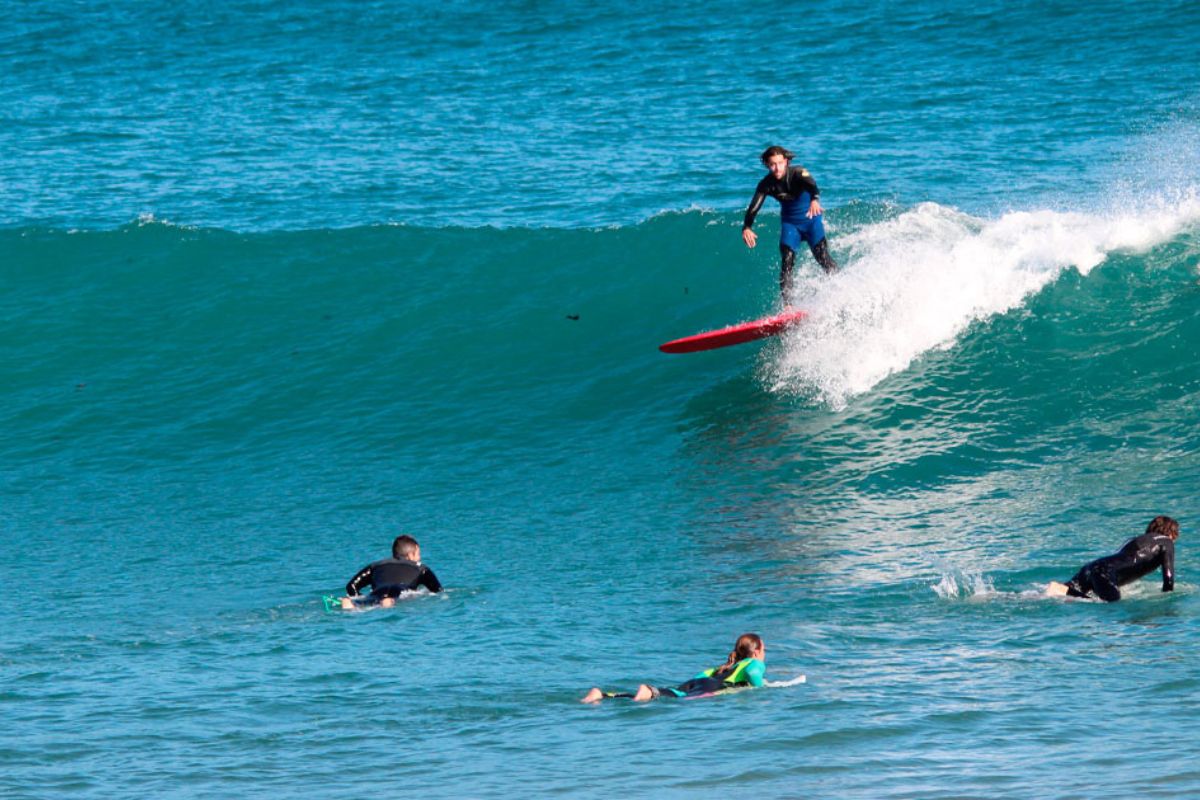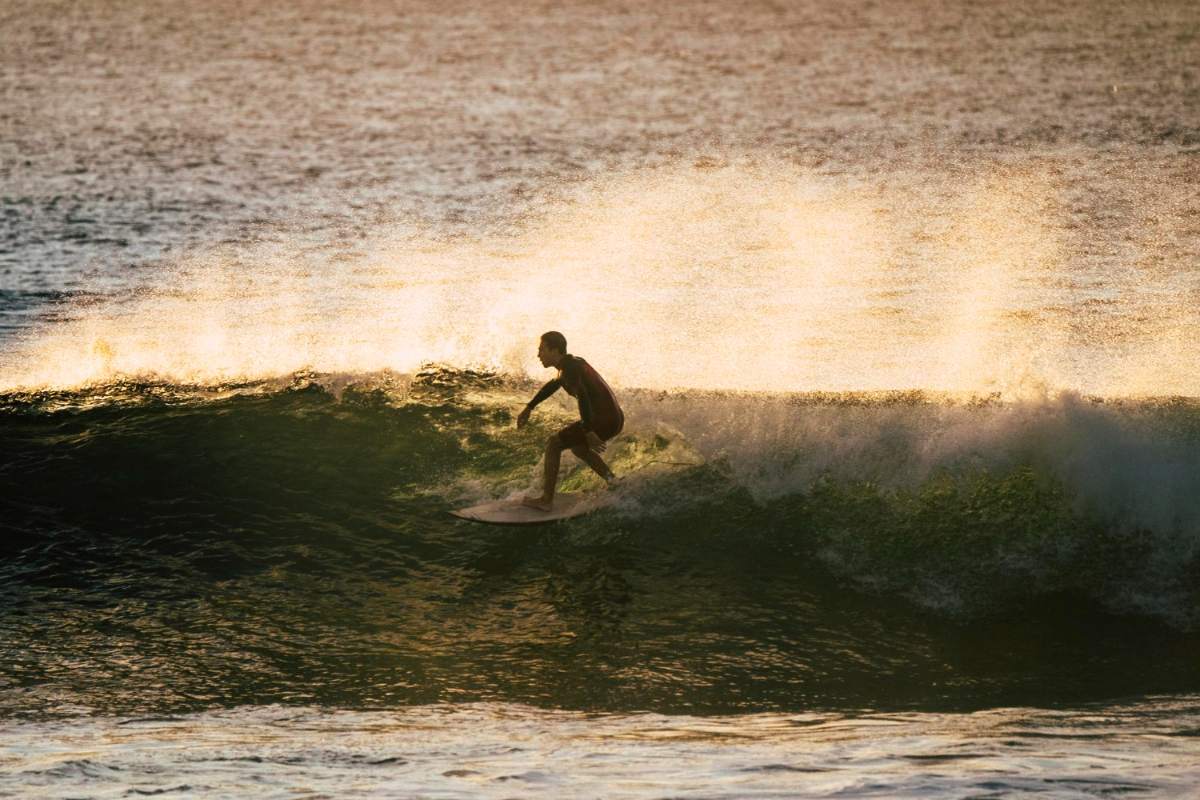The parts of a surfboard

Knowing what the parts of a surfboard are will mean acquiring specialized knowledge in this exciting sport. Let’s take a look at some details.
The first thing to know is that there are several important elements within the board. It is the basic and fundamental element to be able to practice the sport, so it is advisable to know it not only in practice, but also in theory. Knowing its parts will mean being able to perform better movements and take into account the explanations of your instructor at the surf school.
The parts of a surfboard
At first glance a surfboard seems very simple, but it is full of essential details that will be fundamental for surfing a wave. So, as for the basic parts of a surfboard, we know that the front part is also the tip or nose, followed by the center, which is called the deck, and finally the tail or tail. The remaining parts are taken as a reference according to the others.
The tip and the rocker
We start with the front part of the surfboard. This is a sector that is also known by its name of nose, something that is given by the elongated shape it has, in the form of a beak, although there are also other variants, as is the case with the rounded ones.
This is a part that is arched and somewhat curved. This ensures that, once in the water, the board can move easily over the waves. The curvature is known as rocker. Although this part of the surfboard may be relatively simple, the reality is that it is essential when practicing this sport.
Depending on the degree of opening the rocker has, you will be able to surf in one way or another. If the curvature is more pronounced, the board will be easier to maneuver, although it will also be slower. On the contrary, a board with almost no rocker will be very fast, although suitable for specialists.
Soul or stringer
The core, nerve or stringer is conceived as the central part of the surfboard. It is not always visible, nor can it sometimes be seen instantly on all boards. We are talking about a very small strip that crosses it from top to bottom by its central part, being of a different tone to the rest of the board.
You are probably wondering what it is for. Well, the utility of this part of the surfboard is to give more rigidity to the board, in order to avoid any kind of breakage or bending. For that, it can be made of materials such as wood, although it varies from model to model.
The rails or edges
In this case, we are talking about the edges of the board. They have a considerable extension from the tip to the tail, on both sides. However, they are usually much more important than they appear at first glance, since they are always in contact with the wave. At the same time, they are the part of the board you will hold on to.
However, not all edges are the same, nor are they symmetrical across the entire board. There are some that are more square and tapered, soft and hard, as well as having different heights. The combination of all of them will make the board behave in one way or another. This happens with the rounded edges, which make the board more stable; the high ones make it more buoyant; while the curved ones make it easier to carry.
The bottom or the bottom
Here we are talking about the back of the board, which is in permanent contact with the water, on which the board slides. At first glance it may seem quite smooth, but the truth is that it should be slightly concave so that sliding and getting out of the waves is suitable for anyone.
The tail
At the back of the board we have the tail, which is the part opposite to the nose. It has to be much narrower than the front part and, in addition, under it will be the bottom where you can find the fins that we will explain later.
It should be noted that it has different shapes, so, depending on what they are, your board will behave in one way or another. You will notice that there are wide tails, so you can surf on smooth waves, and narrow ones, even when the waves are big. Their finish may also appear as rounded or square, the former being ideal for more sliding, while the latter will make you have better turns and maneuvers.
The keels
We already talked about the tail, while now we can talk about the fins. These are all those little pieces that you will find at the back of your board, which are shaped like shark fins. At the same time, the fins have a fundamental mission, since they direct the water that passes under the board giving it stability, generating a good driving, so they are considered a kind of “rudders” of the board.
There are two types of keels: fixed or removable. Obviously, there are different materials and shapes, so it will vary depending on your case. Depending on the combination you have, you will be able to maneuver the waves in one way or another.
The leash or invention and the stopper
Finally, we have the leash or invention. It appears in the tail, being the plastic cable that joins the surfer with his board, which is tied to the foot of this one by means of a Velcro. It can even be tied to the knee, in some modalities such as body surfing. The leash is used to easily find the wave, since this cable is hooked to the board by means of another piece that we call plug.

We have already learned about the anatomy of a surfboard. Now, you must make sure that the board you buy has the characteristics and fundamental parts of this element so important to manage between the waves.
In Lanzarote we have more than 200 surfboards for rent in Famara so you can try different models before deciding which board to buy. Here are two recommendations of good schools where you can take your surf courses to evolve quickly and safely.
Related articles

Caleta de Famara: an idyllic natural setting on Lanzarote
BOOK NOW Caleta de Famara: an idyllic natural setting on Lanzarote Do you want an ideal place to surf? We

The Best Surf Guide: Valencia
In Valencia, surfing is lived with Mediterranean soul, between soft breezes, golden sand and endless sunsets. With this guide, you will discover the spots where the sea and good vibes go hand in hand. Perfect for beginners… and for those who can’t live without waves.

The Best Surf Guide: Cantabria
Discover Cantabria, a surfing paradise where the sea merges with the mountains. This definitive guide takes you through its best waves, from Somo to Los Locos. Explore beaches for all levels, practical tips, local gastronomy and endless landscapes. Everything you need for your Cantabrian surftrip.
